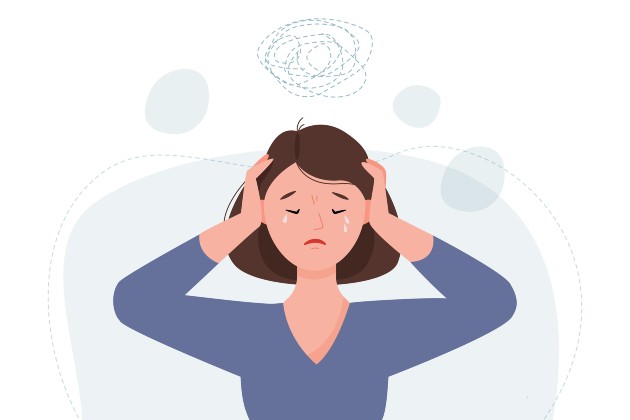Mary Warrilow is an Independent Clinical Nurse Specialist Lymphoedema/Lipoedema and Clinical Adviser for the charity , and a . She answers the key questions about the condition that ��ͷ������ staff need to know.
What is lipoedema?
is a genetic lifelong condition that almost exclusively affects people assigned female at birth. It’s estimated to affect up to 11% of people worldwide.
Symptoms usually begin around puberty, pregnancy or at other times of hormonal change such as the menopause, triggering the abnormal distribution of fatty tissue in the legs, buttocks and sometimes the arms.
What are the symptoms?
Generally, it’s painful and can have a negative affect on quality of life. Symptoms include heaviness and discomfort in the affected areas – legs can feel tender to touch and bruise easily. Fatigue, joint problems, swelling, reduced mobility, flat feet and gait problems may be experienced.
Psychologically, it can be very tough. The visible difference in the size and shape of parts of the body affected can be extremely distressing and bring up feelings of low self-esteem, shame and embarrassment that can sometimes lead to anxiety and depression, and in some cases, eating disorders.
On a day-to-day basis the emotional impact and pain can take its toll. There can also be a financial impact – for some people it can affect them so much they may have to give up work or retire early.
How’s it diagnosed?
There isn’t a diagnostic test for lipoedema, but focus is on clinical assessment and differential diagnosis. Assessment that includes previous medical history, onset, presenting characteristics and impact on quality of life is vital.
Lipoedema is often misdiagnosed as either obesity or lymphoedema due to a lack of awareness on this clinical topic.
What are the stages and types?
There are , with stage 1 being the mildest and stage 4 the most severe. These relate to changes and appearance of the skin and tissues. The stages don’t always account for the severity of a person’s symptoms, such as pain in those affected areas, or the impact lipoedema has on daily life.
relate to the areas affected such as buttocks to knees, buttocks to ankles, calves only, or arms.
How’s it related to lymphoedema?
Lipoedema and lymphoedema are separate conditions but it’s possible to have both. is caused by a defect or damage to the lymphatic system and results in swelling/oedema in the subcutaneous tissues and while it can affect any part of the body, it usually develops in the arms or legs.
In latter stages of lipoedema, a secondary lymphoedema may also develop.
- Read next: Lessons in lymphoedema
Is there any link with obesity?
Obesity and lipoedema are separate conditions too, but there is a link. The abnormal build-up and distribution of adipose tissue (also known as body fat) that is characteristic of lipoedema is not particularly respondent to normal weight management programmes. Body mass index (BMI) can also be misleading – however, weight management is still relevant and avoiding further weight gain is important.
Although more research is needed, there is some emerging evidence that , as well as avoiding processed foods.
What’s the treatment?
There’s no magic cure. Conservative treatment usual involves compression therapy and referring on to other services. A patient might need emotional support such as counselling, or they may also have associated joint problems, obesity or lymphoedema.
Compression garments are medical garments made from firm, elasticated fabric that help improve circulation, support tissues and joints and help with discomfort and heaviness symptoms. However, these won’t change the size or shape of the areas affected unless there’s also a secondary lymphoedema. Good skin care is also encouraged.
What about other therapies?
In terms of , medical lymphatic drainage (MLD) can also help with the inflammation and discomfort, as well as intermittent pneumatic compression (IPC). MLD is a specialist form of massage and skin stretching that is used to stimulate lymphatic flow and patients report that this can help with symptoms, while IPC involves the use of inflatable garments that give a mechanical massage/compression using air-driven pumps.
We must not let this condition stay hidden in the dark
Evidence suggests that specialist liposuction can be effective in managing symptoms and limb volume, but this isn’t currently offered as a treatment on the NHS and suggests that this can be used in research only until it’s reviewed in 2025.
Is the condition progressive?
Lipoedema isn’t always automatically progressive, no. Early recognition and treatment are vital to improving outcomes and quality of life for patients and can prevent further physical and psychological complications such as joint issues and reduced mobility, anxiety and depression.
Can exercise help at all?
Keeping active is important as it can help stimulate the lymphatic system, which can help improve some symptoms. Exercise and movement are vital in improving general health and wellbeing and mental health. Swimming, walking, yoga, and other forms of low aerobic exercise can all be beneficial.
How can ��ͷ������ staff support patients and colleagues?
Lipoedema is still not widely recognised and understood, and the fact that it’s often overlooked – and frequently mistaken for obesity – means many people experience frustration with health care and feel stigmatised. Nursing staff are in a prime position to look out for signs and help raise awareness.
Signposting is key. Signpost individuals to their GP and , and help raise awareness at work or via social media. We must not let this condition stay hidden in the dark.
Further information
- Find out more about the condition and the work of the charity .
- Reach out if you are struggling with the condition yourself. Remember that RCN members can get free, confidential support and assistance from the RCN Counselling Service.
- Join the RCN Women’s Health Forum.
- Join the RCN General Practice Nursing Forum.
- Have a look at the .
- Read more about .








